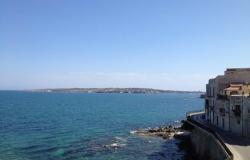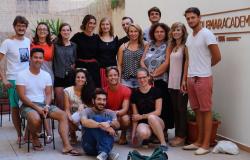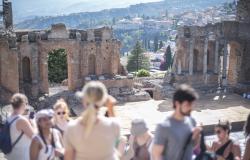It’s almost 70 years since the Allied invasion of Sicily took place that launched the Italian Campaign. The event was a huge turning point during World War II and signalled the start of the demise of both Benito Mussolini and Adolf Hitler. The campaign was arduous, fought in the scorching heat and its combatants were plagued by malaria. The campaign was bloody too, and it’s estimated that approximately 60,000 Allied and 50,000 German soldiers died in Italy between 1943 and 1945.
Codenamed ‘Operation Husky’ the landing of 160,000 British, Commonwealth and US troops in Sicily on the night of 9 and 10 July 1943 was the Allies’ first foray into what was then Axis territory - the island was then under Nazi Occupation and rightly regarded as vital to control the Mediterranean. British and Commonwealth forces led by General Sir Bernard ‘Monty’ Montgomery landed in the Southeast corner of the island between Pachino and Siracusa, and Lieutenant General George S Patton commanded the Seventh US Army that landed in the Gulf of Gela. The Italians put up little resistance; they would soon make peace and join forces with the Allies. The Nazis sought reinforcements but to no avail; they began their retreat on the 10th of August and finally left Sicily seven days later.

Although it only took a relatively short time - just over five weeks - to gain control of the island, not all went as planned, primarily on the fateful first night of the campaign that made history by being the first mass parachute drop at nighttime. Strong winds reaching up to gale force 7 meant that when the Allies’ airborne force attempted landings west of Siracusa, 135 of the 147 gliders were blown off course - some even crash-landed on inhospitable Mount Etna - and 69 were forced into the sea, drowning 252 Red Devils. The ferocious winds blew troop-carrying aircraft off course, leaving them scattered across Southeast Sicily. Amphibious landings were also delayed by the inclement weather and some landed wide of their original destination.
Many of the Allied troops who died that night are buried 2 miles (3 km) west of the town of Siracusa, at Siracusa War Cemetery, on Contrada Canalicchio. The cemetery contains the remains of 1,059 members of the British and Commonwealth forces, 134 of them unidentified, who died in World War II. The cemetery is owned and run by the Commonwealth War Graves Commission, and it’s obvious that great care has been taken in its upkeep. Sicily is a beautiful place but with scruffy edges, yet at this small plot of land the tombstones are immaculate, roses and succulents provide a touch of colour and there is even well-kept grass, which is a feat given that in the height summer temperatures reach more than 40C° and maintaining such greenery takes time and effort. There are also three memorials to commemorate men known to have been buried in other cemeteries in the area, but whose graves could not be located.

A visit to the cemetery may not be top of the list of priorities on a vacation, but it is a moving experience to wander the neatly tended rows of headstones and contemplate the sacrifice of others. Being British I was struck by the familiarity of regiment names from all corners of the British Isles: the Devonshire Regiment, the South Staffordshire Regiment Airborne, the Seaforth Highlanders and the King’s Own Scottish Borderers. Most of all what hit me was the age of those buried there, most of whom were in their twenties, and some were even younger. I was also surprised by the diversity of the deceased, as I read the names of Christians, Hindus and Jews from the United Kingdom, South Africa, India, Canada, New Zealand and Australia. Often the tributes engraved on the headstones are tender words of comfort, one widow had inscribed the following to her husband: ‘Blithe spirit waiting, over the bridge, darling.’
 The cemetery has had some prestigious visitors over the years, including Sir Winston Churchill in 1955 and Prince Edward, Duke of Kent in 1990. Visitors can sign a book of remembrance and its pages contain some poignant comments from relatives of the deceased who have travelled from around the world to honour the memory of fathers, grandfathers, brothers, uncles and great uncles. I was moved to see the number of those in the contemporary military who had made the journey to honour the fallen. My visit made me pause to remember how fortunate I am, and appreciate those who had been brave enough to go to Sicily in dangerous and bleaker times.
The cemetery has had some prestigious visitors over the years, including Sir Winston Churchill in 1955 and Prince Edward, Duke of Kent in 1990. Visitors can sign a book of remembrance and its pages contain some poignant comments from relatives of the deceased who have travelled from around the world to honour the memory of fathers, grandfathers, brothers, uncles and great uncles. I was moved to see the number of those in the contemporary military who had made the journey to honour the fallen. My visit made me pause to remember how fortunate I am, and appreciate those who had been brave enough to go to Sicily in dangerous and bleaker times.
The cemetery is permanently open and may be visited anytime. Address: Via Per Floridia, 10 Contrada Canalicchio, 96100 Siracusa (SR), Sicily, Italy.








